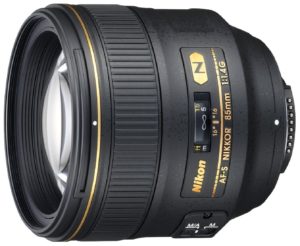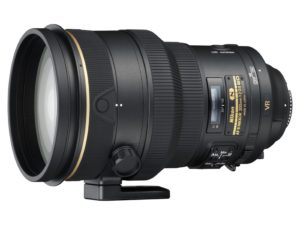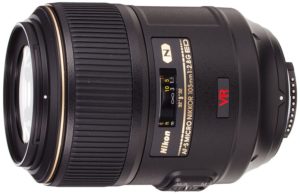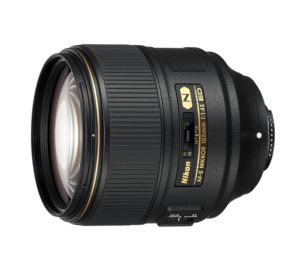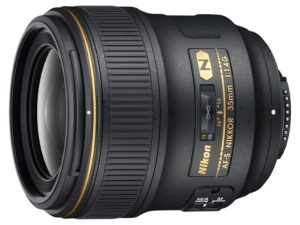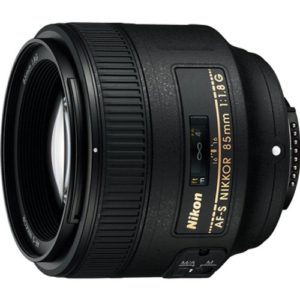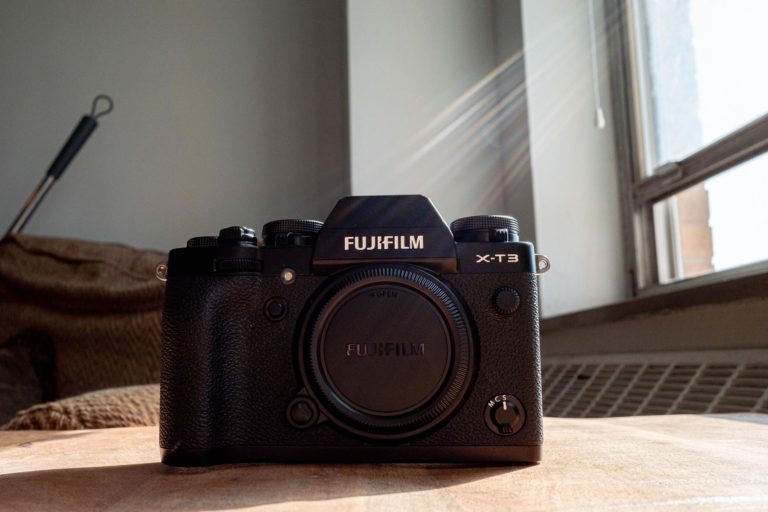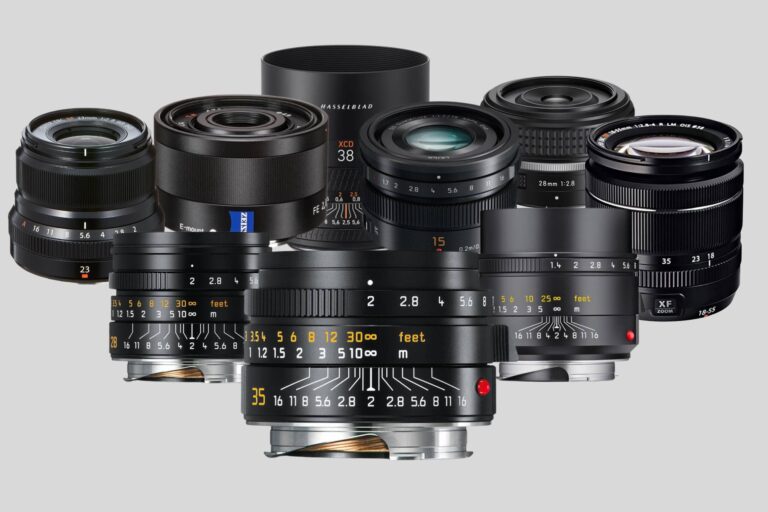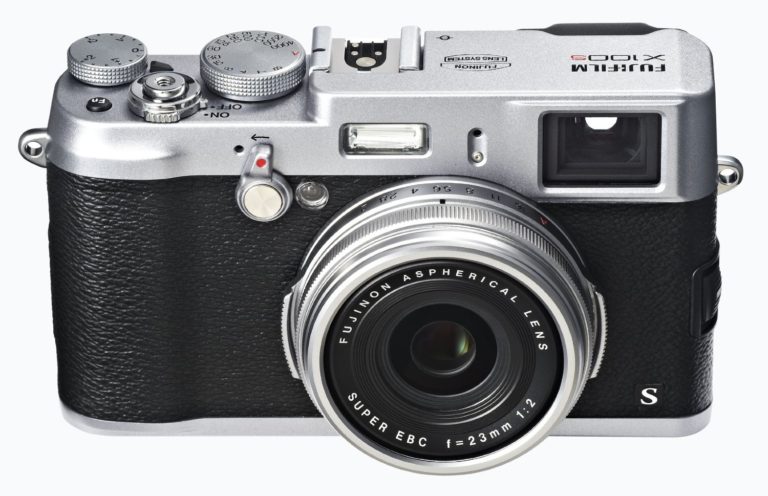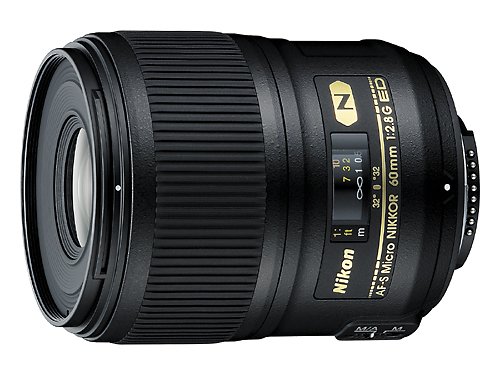Best Nikon Portrait Lenses: 9 Top Picks
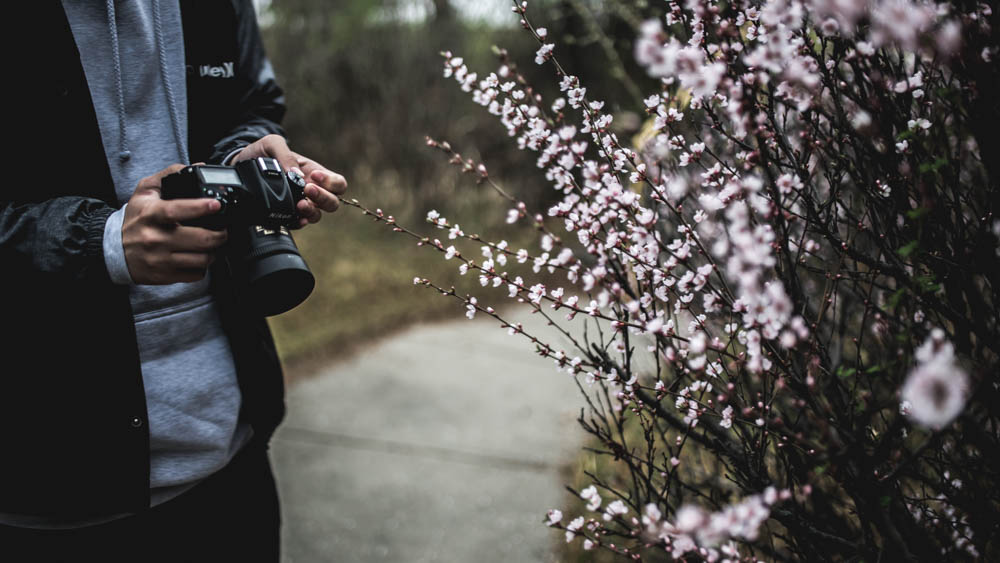
There is no “perfect” portrait lens. And contrary to what some may try to make you believe, there’s no one lens you HAVE to have. There’s more than one way to skin a cat when it comes to portrait photography and any type of photography for that matter.
There are so many different stylistic choices, lighting conditions and factors depending on the location you’re shooting at that the best lens for one particular situation may not perform so well in another.
But that doesn’t mean you need a ton of lenses to cover every situation you may find yourself placed in. And there are several purchasing guidelines we can follow to make sure that we’re not throwing our money when it comes to shelling out and buying one or more portrait lenses.
I’ve bought and sold a lot of lenses over the course of my photography career because of listening to too many photographers talking about the “must have” lenses as if not having a certain one in your bag somehow makes you an inferior photographer. You can be a well-rounded portrait photographer with just a couple of lenses in your kit.
So in this post I’m going to list my picks for what I think are the best Nikon lenses for portraits but also some things to keep in mind for what to look for in a portrait lens.
So what criteria are we looking for when it comes time to invest in a portrait lens that’s going to give us good image quality and be practical in use?
Focal length: the focal length of lenses will have an effect on how flattering it will make our subjects look. The compression you get from using longer focal length lenses is welcome, but there is a limit to focal length on the long end as we want to accentuate our subject’s features but without flattening them.
In general, the longer the better, but as stated before, this has its limits. At the wide end, 35mm is too wide for my tastes. It’s ok for full body portraits and in some cases three quarter length portraits but closer than that you get an unflattering rounded distortion of your subjects’ features. The last thing you want is to make your subjects look like hippos.
The sweet spot is really somewhere between 85mm and 200mm. With focal lengths below that you risk making your subjects look on the heavy side and above 200mm can result in a dull, detached, flat look.
Another consideration is if a certain focal length gives you a comfortable working distance. Let’s say you were doing headshots with a focal length of 24mm. For most photographers and models, that’s going to be a pretty uncomfortable working distance.
Conversely, the longer your focal length, the further away you have to get from your subjects. It can be a pretty big pain in the butt if you have to shout to direct your models. Not to mention that if you work in an indoor studio or smaller space, your ability to us some of the longer focal lengths may be severely restricted.
Sharpness: I’m looking for lenses that are tack sharp, preferably across the whole frame, even at the lens’s widest apertures.
Bokeh: creamy, soft, smooth, buttery bokeh is ideal.
Let’s take a look at my picks for the best Nikon lenses for portraits.
#1: The best overall Nikon lens for portraits: The Nikkor 85mm f/1.4G
The Nikkor 85mm f/1.4G is, in my opinion, not just the best 85mm lens for Nikon cameras but the best Nikon lens for portraits on the market.
It’s very sharp, even shooting it wide open, gives your images nice contrast straight out of camera, and has gorgeous bokeh.
There’s been a lot said about the Nikkor 85mm f/1.4G’s bokeh – and for good reason. You’d be very hard-pressed to find any lens on the market with better bokeh than this lens, irrespective of brand. It has smooth transitions, subtle contrast and it’s smoothness means it doesn’t distract from the image’s subjects.
It’s earned its title of the “cream machine”.
The 85mm focal length excels for head and shoulders portraits, three quarter length, and full body portraits, as long as you have the space. The only type of portrait it’s not good for is really tight headshots, as it can’t focus close enough unfortunately.
But if you’re looking for the best Nikon portrait lens for FX cameras, this is it.
Note: after the Nikkor 85mm f/1.4G, the lenses are in no particular order.
#2: The Nikkor 70-200mm f/2.8G VR II
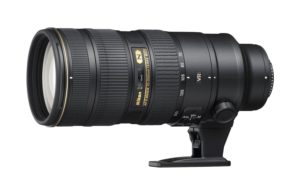
The focal range between 70 and 200 millimeters are all acceptable focal lengths, giving the Nikkor 70-200 f/2.8G VR II not just the capability of obliterating backgrounds at the longer focal lengths, but also the additional focal range for convenience and necessity.
One of the great things about this lens is that if you’re photographing in locations with ugly or distracting backgrounds, you can get some really good separation at 200mm. You can focus on your subjects at wider apertures and your backgrounds will just sort of fade off into creamy bokeh goodness.
The Nikkor 70-200mm f/2.8G VR II is sharp and delivers very good image quality. It has the fastest autofocus of any Nikon lens I’ve used, but more importantly for portraits, it’s dead-on accurate. It just gets out of the way and does what you want it to do in terms of autofocus.
That’s one of the nice things about this lens – if you buy it, it’s useful in situations other than just portraits.
It also has a very advanced VR system, one that apparently gives you 4 extra stops of light that you wouldn’t normally have. As a rule of thumb, you should generally not let your shutter speed drop lower than your focal length. i.e. if you’re shooting at 200mm, you should not shoot at lower than 1/200s if you want your photos to be in focus.
I’ve been able to get usable results at 1/20s at 200mm because of the awesome VR system this lens has.
Like I said before, you can get really good subject separation with this lens and it has nice bokeh at its wider apertures. It doesn’t have the best bokeh though. When you compare it to some of the other options that could be considered among the best Nikon portrait lenses, the bokeh of the Nikkor 70-200mm f/2.8G VR II falls a little short.
It’s not bad by any means – not by a long shot. But it’s slightly more defined and less smooth than some of the other options on this list. It’s one of those things that only we as photographers pixel peeping examples side by side would notice. But it’s still worth taking into consideration.
#3: The Nikkor 200mm f/2G VR II
I had a really hard time not rating this lens as the best Nikon portrait lens overall – it’s probably the sharpest of any of the lenses here and produces excellent, dreamy bokeh. It easily give you the best separation of any of the lenses on this list.
But it’s also the least practical of these lenses. It’s enormous and very heavy. Not to mention it’s the most expensive portrait lens here by a long shot. In many ways it’s hard to even call it a portrait lens, as the majority of photographers who buy it are probably skewed more towards using it for sports photography.
This is by no means a “must have” lens. This lens is for those who demand the absolute best and are prepared to pay for it – both in terms of price and practicality.
At 200mm, you have to shoot at a significant distance from your subjects – to the point where you’re getting into yelling territory in order to direct them. And with the lens’s enormous front element, shooting with it is less personal and can be somewhat intimidating for your subjects.
But if you can put all that aside, the Nikkor 200mm f/2G VR II is in a league of its own.
#4: Nikkor 58mm f/1.4G
When the Nikkor 58mm f/1.4G originally came out, I was perplexed as to what hell Nikon was thinking releasing a lens with these specs.
Uhh… A fifty EIGHT millimeter lens even though Nikon already has several capable fifties? Plus multiple available options in the 60mm-85mm lens.
But after seeing what this thing could do after seeing a few sample images and trying it out for myself I really changed my mind. It’s the type of lens that truly has character and is something special.
The thing about the 58mm focal length is that it actually makes for a legitimate difference compared to 50mm. I’ve never been a huge fan of the 50mm focal length – I remember putting my first 50mm lens on my camera and being like “meh”. With a brand new lens!
Normally I mess around with new lenses for hours.
Part of what kept me from really liking the focal length was that it’s close to the field of view we see with our eyes but slightly tighter, making for an awkward perspective when going from normal vision to bringing the camera to my eye with a 50mm attached. I just know more of what to expect with the wideness of a 35mm or the tightness of an 85mm.
For whatever reason, the 50mm focal length just doesn’t jive all that well with me, and that’s ok.
Additionally, with 50mm lenses, you still get a bit of rounded distortion but it wasn’t quite to the 85mm focal length that I think is really suitable to portraits. That little extra 8mm actually eliminates a good deal of that distortion.
And while the other Nikon 50mm G lenses (the 50mm f/1.4G and 50mm 1.8G) produce technically good image quality in terms of sharpness and detail, I find them wholly uninspiring.
Not so with the Nikkor 58mm f/1.4G.
When the stars align and you focus and compose things properly with this lens, it produces truly stunning pictures.
That’s not to say this is extremely sharp – Nikon has made clear that was not what they were going for when they produced this lens. They chose character over technical performance in its design.
It has slightly different bokeh than the Nikkor 85mm f/1.4G – it’s definitely not as creamy and circular. But I wouldn’t say it’s worse bokeh at all, it’s just different has a look all its own.
With a lot of lenses, you get a really defined transition between the in-focus and out-of-focus areas of their photos. Not so with the Nikkor 58mm f/1.4G. While some may like that look, I really prefer the transitions the 58mm produces. It’s one of the lens’ characteristics that makes its images so magical.
There’s also just something about the way it renders natural light images, making it the best Nikon lens for outdoor portraits in my opinion. I love the bokeh of it too – I think it’s a toss-up between the 85mm f/1.4, so I think the two are tied for the best Nikon lenses for bokeh.
When you put the 58mm lens on crop sensor cameras, you get a really nice field of view for portraits with the crop factor too, at about 87mm. So I’d say it’s the best Nikon lens for DX cameras.
The Nikkor 58mm f/1.4G is certainly an investment in terms of price, but you really get the best of the best for your money with this lens.
#5: The Best Nikon Headshot Portrait Lens – The Micro Nikon 105mm f/2.8G
The cool thing about the Micro Nikkor 105mm f/2.8G is that it’s great for two purposes:
Both macro work and portraits. I’ve found the 105mm perspective to be a great focal length for portraits. And when you want to do true headshots where the person’s face fills the frame, the macro capability of this lens makes it possible.
You can even fill your frame with just one of a model’s features if you want, like just both or one of their eyes or maybe just their lips. That’s something you can’t do with a regular 85mm lens.
The Nikon 105mm f/2.8G is one of the sharpest Nikon lenses out there and, not surprisingly as it’s a macro lens, resolves a butt load of detail. While it’s not really widely known for its bokeh, it has gorgeous bokeh that I would put on par with the best, even the 85mm f/1.4.
The only thing that some photographers probably have reservations about using this lens for portraits is its widest aperture being f/2.8. But I wouldn’t use that as a deciding factor in buying this lens at all.
105mm is already a longer focal length, negating much of the need of having a wider aperture to get subject separation because of the lens’ natural compression. You get about the same amount of subject separation with 105mm at f/2.8 as you do with an 85mm at f/1.4.
Plus, if you’re shooting tight headshots, the depth of field will actually be too thin wide open at f/2.8 in many cases with this lens. When shooting from very close distances, your depth of field decreases, so it’s possible to photograph someone’s eyes but have their nose be out-of-focus. That may be a stylistic choice you’d want to make on occasion, but the point is that the f/2.8 aperture of the Nikkor 105mm f/2.8G shouldn’t hold you back from considering it.
#6: The NIKKOR 105mm f/1.4E ED
Another 105mm on this list of best Nikon lenses for portrait photography?!
Yup.
While it may not have the close focusing abilities that the Micro Nikon 105mm f/2.8G has, it does have a couple of things going for it that make it what appears to be an awesome lens in its own right:
Two full extra stops of aperture and a unique image quality much like what Nikon was going for with the 58mm f/1.4G.
The jury is still a bit out on this one, as it was released not too long ago and there’s not a ton of sample images yet. I haven’t personally been able to get my hands on it yet to test it out. But from Nikon’s official samples and what I’ve seen from multiple photographers, this lens is a top-notch performer up there with the best of them.
It’s got beautiful bokeh and the 1.4 aperture on a 105mm lens opens up a ton of possibilities for just obliterating your backgrounds and getting insane subject separation.
Worth checking out for sure.
#7: The Zeiss Otus 85mm f/1.4 for Nikon F Mount
You could really make the case for the Zeiss Otus 85mm f/1.4 being the best 85mm lens for Nikon cameras. And it’s certainly not an easy choice between the two – that is, if you have the budget for the Zeiss, as it’s significantly more expensive.
And there’s a significant deal-breaker about the Zeiss Otus 85mm f/1.4 for many photographers:
No autofocus.
Zeiss makes autofocus glass for only a couple companies, Nikon not being one of them. There are a couple of reasons why, which you can read about here, but the bottom line is that Zeiss does not offer autofocus on their Nikon mount lenses and it appears that won’t change for the foreseeable future.
And manually focusing a lens of this focal length is really no easy feat. I would not recommend this lens to beginners for this reason.
Despite the Zeiss Otus 85mm f/1.4’s lack of autofocus, in the right hands, it’s capable of producing legitimately incredible images. It’s ridiculously sharp.
And while I prefer the look of the bokeh from the Nikon 85mm f/1.4G over the Zeiss, the difference between the two is pretty much negligible.
If you’re debating between the two, it’s really a toss-up and really comes down to personal preference.
#8: The Nikon 35mm f/1.4G
I love the 35mm focal length, but specifically for portraits, I generally use it out of necessity rather than pure stylistic or creative choice. I’m assuming most of you reading this know that wider lenses have distortion that can make your subjects look heavier than they really are.
And while the 35mm focal length isn’t nearly as noticeable in this regard as say, 24mm and wider, that effect is amplified the closer to your subjects you shoot from. So you have to be wary of that when shooting portraits with a 35mm.
So while there may be instances where you might want to go for the effect of making your subject look like big lard asses (maybe you’re photographing someone who you’re not a big fan of), but normally that’s not the case.
But when you’re taking portraits in cramped spaces – and this is an issue for many portrait photographers – sometimes you just have to go wide. Not all of us can afford the bigger spaces for portrait studios. Or a studio at all.
I don’t work as a portrait photographer full-time right now, so it wouldn’t make sense for me to rent one out. So when I do have a portrait gig, I often do them at my own tiny little apartment or improvise at the model’s home.
Being limited on space can certainly be restricting, but forces you to think outside the box, really challenge yourself and push your photography to the next level. Just take a look at the amazing work this guy produces with these creative limitations.
The point is, in these situations, I just would not be able to do it without the Nikon 35mm f/1.4G.
It’s also a great lens for group portraits or just two-subject portraits. I’ve used it a ton for shooting couples during their engagement sessions and it’s great for that. And it’s great for family portraits – it’s the best Nikon lens for outdoor family portraits in my opinion.
Because of the slight distortion factor, I try to keep portraits with it limited to full body and three quarter portraits, but I absolutely love this lens. It’s sharp, resolves a lot of detail but more importantly is just one of those lenses that has a ton of character.
It has the best bokeh of any 35mm lens I’ve seen – bokeh that you’d expect more from a much longer focal length lens.
I wouldn’t go to a portrait job without having it or some other wider angle lens in my camera bag.
#9: The Nikon 85mm f/1.8G – Best Nikon Budget Portrait Lens
If you’re on a budget and want to shoot portraits, you can’t go wrong with the Nikon 85mm f/1.8G. It’s a great lens, one that was a workhorse for me when I started out.
I now use the 85mm 1.4 but I still keep this one as a backup. And for weddings I still use it, as it’s a heck of a lot lighter and actually focuses faster.
The 85mm 1.8 does literally like 90% or more of what the 1.4 does. It’s still very sharp, takes in only a half-stop less light, and has pleasing bokeh.
But it does all that in a much lighter package and is only a fraction of the price. It’s easily the best Nikon portrait lens if you’re on a budget. I highly recommend it.
Also worth a mention: The DC-NIKKOR 135mm f/2D. A really nice option for portraits but as it was released 25 years ago, is quite dated. It’s not very sharp wide open and doesn’t really have the resolving capabilities needed for the higher megapixel cameras of today, like the Nikon D810. The DC of the camera stands for Defocus Control and is the selling feature of the lens – it allows you to adjust the character of the out-of-focus areas of the lens. You can take a look at a hands-on review of it here.
Conclusion
As mentioned before, there’s no one single best portrait lens for Nikon – or best lens for any style of photography for that matter.
There are several optical aspects that we look for as photographers when it comes to deciding on what lenses we use for portraiture. Things that most of us can agree on: sharpness, detail, nice bokeh, etc.
But what it really comes down to are your own personal preferences for what you want out of your portrait lenses. What makes photography so great is that it’s completely subjective.
Take a look at and consider all your options. Try them out if you can. And in the end use your own vision to choose what’s best for you. You call the shots.
Thinking of buying one or more of these Nikon portrait lenses? Please consider using one of the affiliate links in this articles to do so. It doesn’t cost you anything extra, and it helps run this site. Thanks for reading!
More Nikon Gear Reviews:
- Nikon 24-70mm f/2.8G ED Review
- Nikon 35mm f2D Review
- Nikon 50mm 1.8G Review
- Nikon 60mm Macro 2.8 G Review
- Nikon 85mm 1.8 G Review
- Nikon 70-200mm VR II Review
- Nikon SB-700 Review
- Best Nikon Lenses for Weddings
- Best Nikon DX Lenses
- Best Nikon Lenses for Landscape Photography
- Best Lenses for Nikon D750
- Nikon Photography Hashtags

